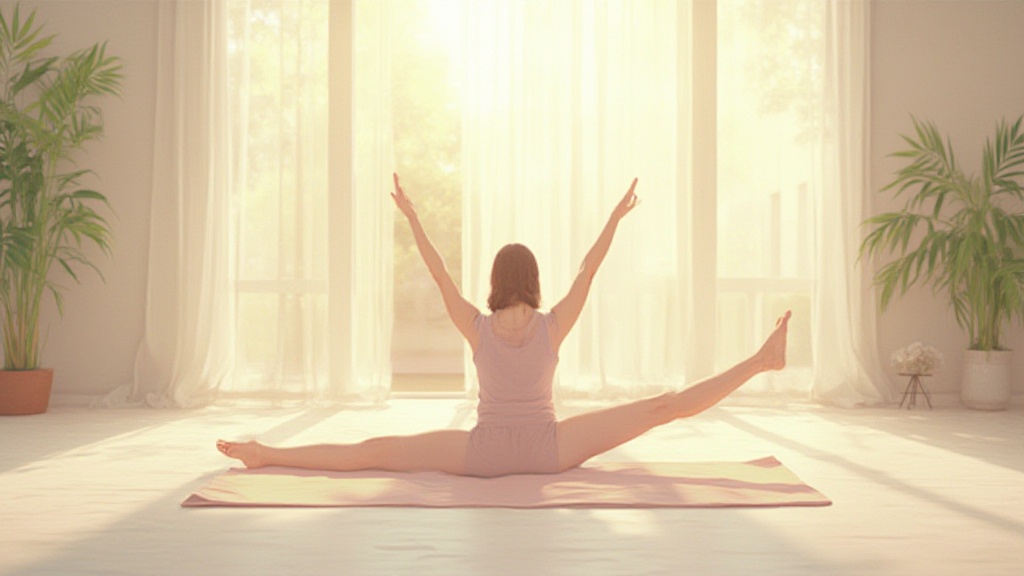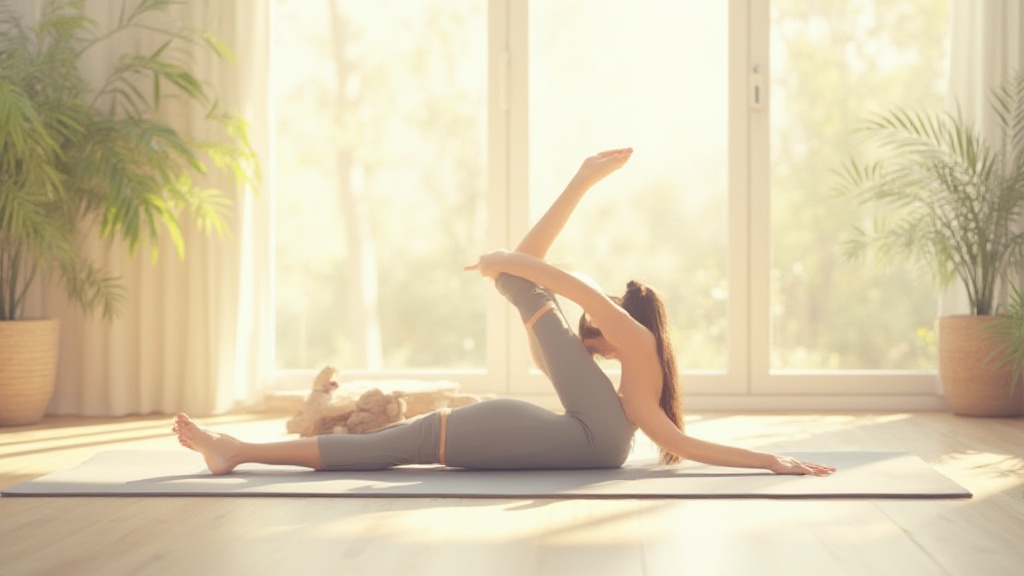
Incorporating a daily stretching routine can significantly improve your flexibility, impacting both physical performance and daily activities. Flexibility exercises not only foster a greater range of motion but also contribute to injury prevention techniques.
Engaging in simple stretches each morning prepares your muscles for the day ahead.
Dynamic stretches and static stretches create long-lasting benefits that enhance your overall mobility.
Ready to improve your flexibility and start your day right? With just a few minutes of daily stretching, you can experience muscle elongation and tension relief, setting a positive tone for your day.
Benefits Of Daily Stretching Routines
Implementing daily stretching routines yields numerous physical and mental health benefits, proving essential for overall wellness. Regular stretching can significantly enhance muscle recovery, leading to improved athletic performance over time.
Additionally, flexibility exercises promote better body awareness, which helps alleviate stress and boosts mental clarity.
Physical Health Advantages
- Posture improvement: Consistent stretching can enhance your posture by elongating muscles and correcting imbalances.
- Circulation boost: Stretching increases blood flow, which benefits muscle recovery and overall health.
- Tension reduction: Stretching techniques help relieve muscle tension, making you feel more relaxed throughout the day.
Mental Health Benefits
- Relaxation techniques: Incorporating gentle stretching fosters a sense of calm and reduces anxiety.
- Mindfulness practice: Focused stretching promotes concentration and encourages mindful movement.
- Emotional stability: Regular stretching routines can enhance mental resilience and overall emotional well-being.
Over the long term, individuals may notice major improvements in their movement patterns and overall wellness habits. Emphasizing daily stretches fosters a holistic approach to health, ensuring your body remains agile and resilient. Adopting personalized routines focusing on recovery strategies and active lifestyle can lead to sustainable benefits.

How Do Flexibility Exercises Help
Flexibility exercises serve as a cornerstone for enhancing physical activity benefits, significantly improving athletic performance and daily functionality. These movements, such as gentle stretching, directly contribute to a greater range of motion, which is critical for optimizing performance in sports.
For instance, incorporating a morning routine of basic stretches, like a hamstring stretch or shoulder stretch, can substantially improve muscle recovery and alleviate tension throughout the day.
Not only do flexibility exercises promote injury prevention techniques through enhanced muscle elasticity, but they also facilitate better posture improvement and efficiency in movement, ensuring a more active lifestyle.
Effective Techniques For Muscle Elongation
Incorporating muscle elongation techniques is essential for injury prevention, particularly for active individuals.
Utilizing a combination of static stretches and dynamically stretching can cater to various fitness levels, making these methods accessible to both beginners and advanced athletes alike.
For maximum effect, consider combining static and dynamic stretches.
Here is a practical approach:
- Static stretches: Focus on holding stretches, such as the quadriceps stretch and back stretch, for 15-30 seconds.
- Dynamic warm-up exercises: Incorporate movements like leg swings or arm circles to enhance blood flow and prepare muscles.
For example, a weekly routine that alternates between these techniques can yield impressive results in mobility training. Such practices not only improve overall movement quality but also contribute to better recovery routines, ensuring a well-rounded approach to physical fitness.
Flexibility Exercises
- Flexibility exercises can improve athletic performance by increasing the range of motion.
- Regular stretching routines can enhance muscle recovery and reduce daily tension.
- Incorporating both static and dynamic stretches can effectively prevent injuries.
- Improved flexibility contributes to better posture and overall movement efficiency.
What Is The Role Of Dynamic Stretches
Dynamic stretches serve an important function in enhancing physical readiness before workouts. These movements actively engage major muscle groups, improving flexibility and range of motion.
Incorporating dynamic stretching increases blood flow to muscles, effectively preparing the body for more intense physical activity.
A beneficial dynamic stretch routine for beginners includes:.
- Leg Swings: Forward and side swings promote hip joint mobility.
- Arm Circles: These help warm up shoulder joints gradually.
- Torso Twists: Controlled twists engage core muscles effectively.
- High Knees: This exercise boosts the heart rate while jogging in place.
By implementing such warmup exercises, individuals can achieve better movement quality and overall athletic performance, while reducing injury risks.
Guidelines For Injury Prevention Techniques
Effective injury prevention techniques support long-term physical health. Integrating flexibility exercises with strength training enhances muscle resilience and flexibility, which are essential for performing activities safely. Regular consistency in stretching routines aids muscle recovery, preventing tightness and potential injuries. To assess personal risk factors, consider the following checklist:
Evaluate previous injuries and their impact on current fitness levels.
Assess flexibility levels to identify tight areas needing attention.
Consider the type of exercise undertaken and use appropriate footwear.
Understand personal fitness limitations and tailor routines accordingly.
By following these guidelines, individuals can adopt effective recovery strategies that promote wellness habits and contribute to better physical outcomes.
Dynamic Stretches and Injury Prevention
- Dynamic stretching can improve athletic performance by increasing blood flow and muscle temperature.
- Studies show that incorporating flexibility exercises can reduce the risk of injury in physically active individuals.
- Regular stretching routines are associated with enhanced muscle recovery and decreased muscle soreness.
- Proper assessment of personal fitness levels can lead to more tailored and effective workout routines, minimizing injury risks.
Exploring Tension Relief Through Stretching
Stretching serves as an effective strategy for managing stress by specifically targeting muscle tension that builds due to various daily stressors. Muscle tension often arises from factors such as poor posture, prolonged sitting, or emotional stress, all of which may lead to discomfort and decreased mobility.
Engaging in regular flexibility exercises not only promotes muscle elongation but also enhances overall wellness.
Physically, stretching affects muscle fibers, fostering relaxation and significantly reducing the production of stress hormones.
To alleviate tension in common areas, consider incorporating the following stretches into your routine:.
- Neck tilts: Gentle movements to ease neck stiffness.
- Shoulder stretches: Help release tightness around the shoulders.
- Back stretches: Promote enhanced spinal flexibility and comfort.
By implementing these targeted stretches, individuals can experience significant tension relief while also fostering mindful movement that contributes to overall health.
Importance Of Posture Improvement Practices
Enhancing posture represents a fundamental component of overall wellness and physical health, significantly influencing daily comfort and productivity levels. Integrating stretching into posture improvement practices complements ergonomic methods, promoting better body alignment and reducing the risk of musculoskeletal issues.
Effective posture supports muscle recovery and encourages tension reduction.
To incorporate posture checks throughout the day, consider the following strategies:.
- Set reminders for regular posture assessments to encourage self-awareness.
- Utilize ergonomic tools, such as standing desks, to facilitate better body mechanics.
- Engage in mindful movement practices that reinforce body awareness and improve movement patterns.
Making posture improvement a consistent part of your daily routine ultimately supports an active lifestyle and contributes to enhanced overall health.
Tension Relief and Posture Improvement
- Regular stretching can reduce muscle tension by up to 30% in some individuals.
- Improved posture can lead to a 20% increase in productivity due to enhanced comfort and focus.
- Incorporating ergonomic tools can decrease the risk of developing chronic musculoskeletal disorders by 50%.
- Mindful movement practices have been shown to lower stress levels by promoting relaxation and body awareness.
Enhancing Circulation Boost With Stretching
Regular stretching significantly enhances circulation, promoting better blood flow throughout the body. Improved blood flow not only expedites recovery but also enhances flexibility and reduces muscle tension.
Stretching exercises increase the elasticity of blood vessels, thereby supporting a circulation boost.
Engaging in mobility training during work breaks can yield substantial health benefits.
Practical Routine for Enhanced Circulation
Consider a simple routine: during work breaks, engage in a few dynamic stretches such as arm stretches or hamstring stretches.
Efforts as brief as five minutes every hour can lead to remarkable benefits in circulation. This consistency fosters not only a better range of motion but also enhances overall daily health and performance.
Incorporating stretching guidelines into your daily regimen can contribute to tension relief and posture improvement.
Recovery routines, which include gentle stretching and yoga poses, enhance flexibility and support muscle recovery. Adopting wellness habits that prioritize stretching will promote an active lifestyle and improve movement quality.
Utilizing stretching tools or participating in guided sessions can further enhance your practice, ensuring comprehensive engagement in your movement patterns.
By promoting mindful movement, one can achieve better body awareness and overall stress relief, creating a balanced approach to fitness and well-being.
- Regular stretching can improve blood flow by increasing the elasticity of blood vessels.
- Dynamic stretches for just five minutes every hour can significantly enhance circulation and overall health.
- Gentle stretching and yoga poses are effective for muscle recovery and flexibility improvement.
- Mindful movement practices contribute to better body awareness and stress relief.
